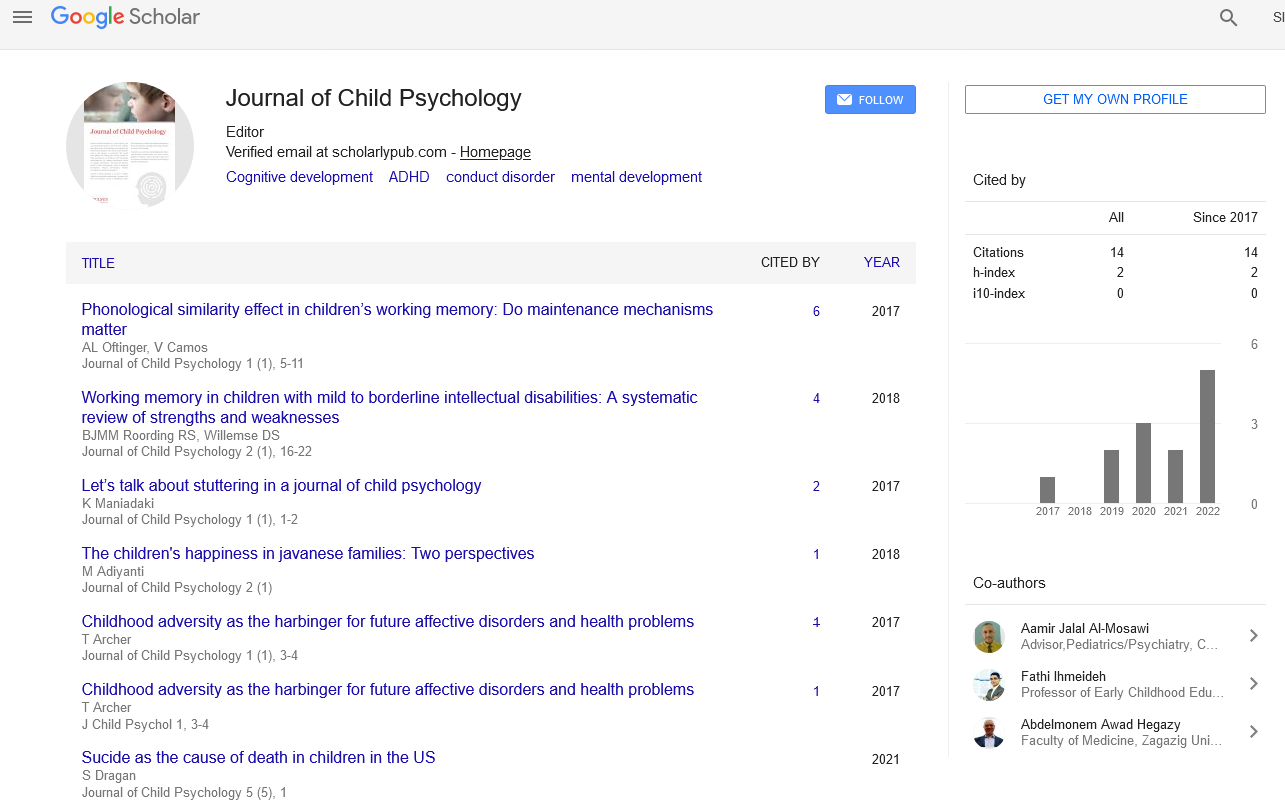Sucide as the cause of death in children in the US
Published: 23-Dec-2021
Citation: Dragan S (2021) Sucide as the cause of death in children in the US. J Child Psychol. 5(5)
This open-access article is distributed under the terms of the Creative Commons Attribution Non-Commercial License (CC BY-NC) (http://creativecommons.org/licenses/by-nc/4.0/), which permits reuse, distribution and reproduction of the article, provided that the original work is properly cited and the reuse is restricted to noncommercial purposes. For commercial reuse, contact reprints@pulsus.com
Introduction
Suicide is one of the alarming causes of death in children in the US. The children suffering from Psychological problems and mental disorders and in the age range of 5 to 11 are more prone to suicide. The team of researchers from the United States collected data on the youth suicide deaths using the government data portal. Of all the deaths of the children aged 5 to 11 years, most of the children were in the age 10 to 11 and three fourths of them belong to male gender. Among the children who died by suicide, one fourth of them experienced a psychological problem or mental disorder such as mood disorders, impulsive or reckless behavior, conduct disorders, obsession compulsion disorder, attention deficit hyperactivity disorder and depression. Most of them were receiving mental health treatment and a prior hospitalization history for mental treatment was observed before their death by suicide. Another one fourth of children experienced traumatic incidents such as childhood abuse, neglect, strict disciplinary actions, school problems, parent-child conflicts, family dysfunction including divorce or custody issues and family history of psychological problems.
The themes of psychological problems and traumatic incidents are cooccurring as the children with mental disorders often had traumatic incidents related to family dysfunction. Sudden and extreme changes in eating habits, withdrawal from friends, dropping out of group activities, lingering expressions of unworthiness or failure and major changes in sleep patterns are some of the behavioral pattern observed in children with suicidal intentions. The study further found thee pattern of suicides in young children. Most of the children committed suicide by hanging or by getting suffocated in their bedrooms while some of them committed suicide by using firearms obtained from their respective houses where the guns are left unlocked. One fourth of the children had a prior history of suicide attempts or suicidal ideation statements made on the day of their suicide. The findings observed in this study throw a light on the importance of early suicide prevention efforts to be put on the child.
The parents or caregivers should overview the behavior of the children and should emphasize on their emotional behavior. Family based intervention is required for the children who experienced traumatic incidents related to family dysfunction. Parents or the family members should not fight in front of the children should not verbally or physically abuse the children, should emotionally support the children when needed, should watch their behavior with other family members and surrounding people. Educational programs should be conducted in the schools on how to handle peer pressure, emotional imbalance, and importance of life and safe usage of fire arms. While the children might be defensive and resist the help at the initial stage, the behaviors should be considered as a barrier imposed to test how much people care to help them out. For most of the adolescents trying to commit suicide, it is a relief to find someone who genuinely care and are able to listen to their problems. Not only the psychiatrists, but parents, caregivers and school staff can also help the child recover from the trauma.





